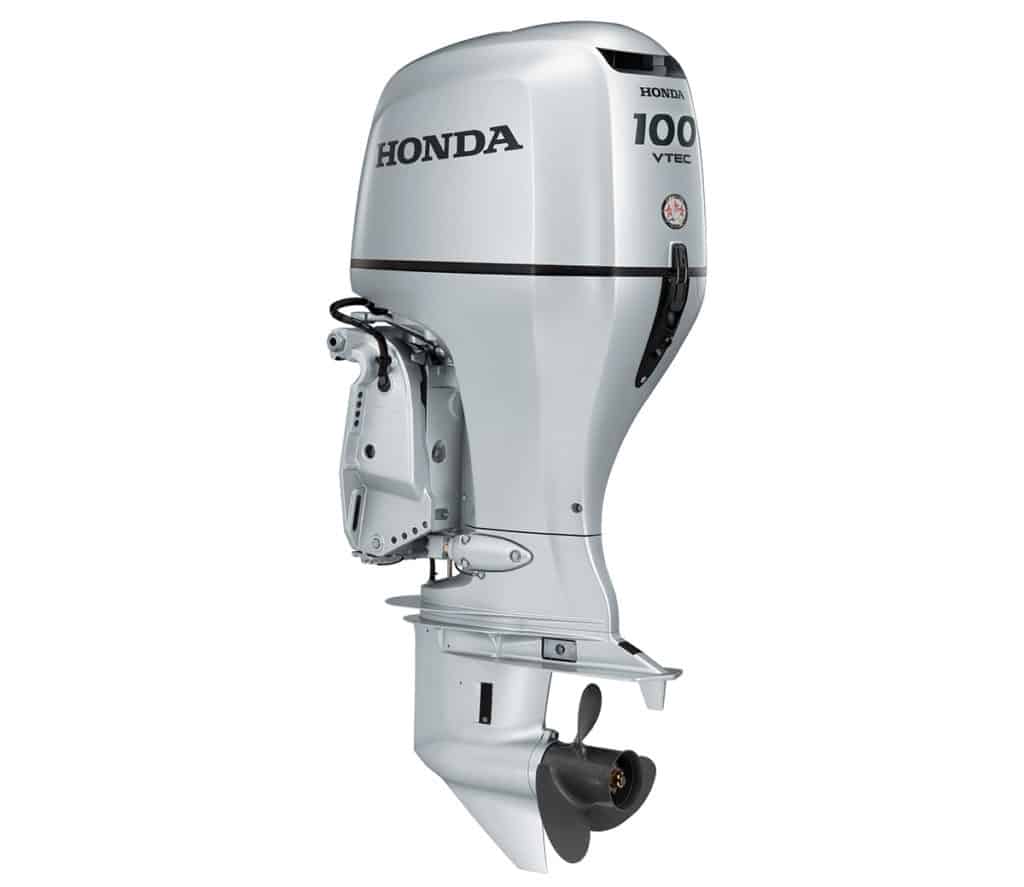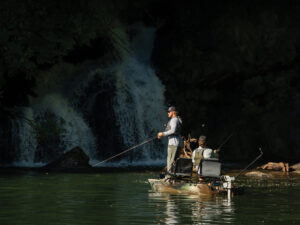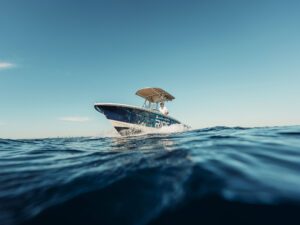
While big six- and eight-cylinder outboards might grab the lion’s share of headlines, midrange outboards represent the meat and potatoes of use by boaters.
Generally defined as outboards ranging from 75 to 115 hp, this class reigns as one of the most popular, particularly on lakes and rivers in Middle America where midrange engines power many of today’s pontoon and aluminum fishing boats.
Honda Marine’s new BF100 ups the ante in the midrange arena. It brings variable valve timing and lift to the category and offers a host of other advanced features, including Lean Burn Control for greater fuel efficiency and Boosted Low Speed Torque (BLAST) for better hole shot.
Weighing 360 pounds (dry with a 20-inch shaft), the new inline four-cylinder stands as the only 100 hp outboard, giving it the best power-to-weight ratio among competitive 90 hp four-strokes, nearly equaling that of the two-stroke Evinrude 90.
The block and technology in the BF100 evolved on the automotive side of Honda and, in particular, in Honda’s popular, high-mileage Fit car. Honda’s VTEC variable valve timing and lift, for example, was born in cars, and it has proven to enhance performance in four-stroke outboards as well.
Introduced first by Honda Marine for its V-6 outboards, VTEC varies the lift and duration of the open intake valves to deliver optimal performance at both low and high rpm. This system uses two cam-lobe profiles to operate the intake valves. Low-lift, short-duration cam lobes provide strong torque at low rpm. As rpm increases, a piston engages a rocker arm on a high-lift cam, locking all three rocker arms together. As a result, the intake valves are open for a longer period of time at higher rpm to produce more power.
Honda calls this its replacement for displacement. Indeed, the BF100’s 1.5-liter block produces 11 percent more horsepower than outboards in the 90 hp class, all of which possess similar or greater displacement.
To further improve hole shot, the BLAST system advances the spark-plug timing and sets the air-to-fuel mixture to a richer setting when the throttle body for the Programmed Fuel Injection system is opened suddenly. This acts like a quick shot of adrenaline to amplify the engine’s low-end torque.
Honda’s new outboard also features Lean Burn Control to increase fuel efficiency at cruising speeds. An oxygen sensor monitors the air-to-fuel ratio. Using that data, the engine’s electronic brain makes adjustments in the ratio, leaning out the fuel when the engine levels to a consistent midrange rpm. Also helping efficiency and speed is a high-performance gear case with a longer anti-ventilation plate to minimize trapped water and help eliminate porpoising. A front splash plate also reduces spray emanating from the bottom of the boat hull. A 2.33-to-1 gear ratio allows the BF100 to use 13- to 14-inch-diameter propellers to lift heavier loads.
To help power marine electronics, livewell pumps and other accessories, the alternator develops 44 amps in total, with 35 of those amps dedicated to powering onboard equipment and charging batteries.
Anglers who troll will love the Honda BF100. The motor’s push-button troll-speed control lets you fine-tune the pace in 50 rpm increments from 650 to 1,000 rpm. The feature is standard in tiller models and optional on engines with remote throttle and shift.
Honda has not forgotten coastal boaters. The BF100 comes with a multifaceted corrosion-protection system that includes a paint process using four different layers to protect the aluminum-alloy housings. In addition, multiple sacrificial anodes guard against galvanic corrosion. Freshwater flush ports let you rinse salt and other contaminants from internal cooling passages with a garden hose.
The Honda BF100 features NMEA 2000 connectivity, allowing you to network the engine systems with onboard marine electronics and view engine parameters on compatible multifunction displays.









